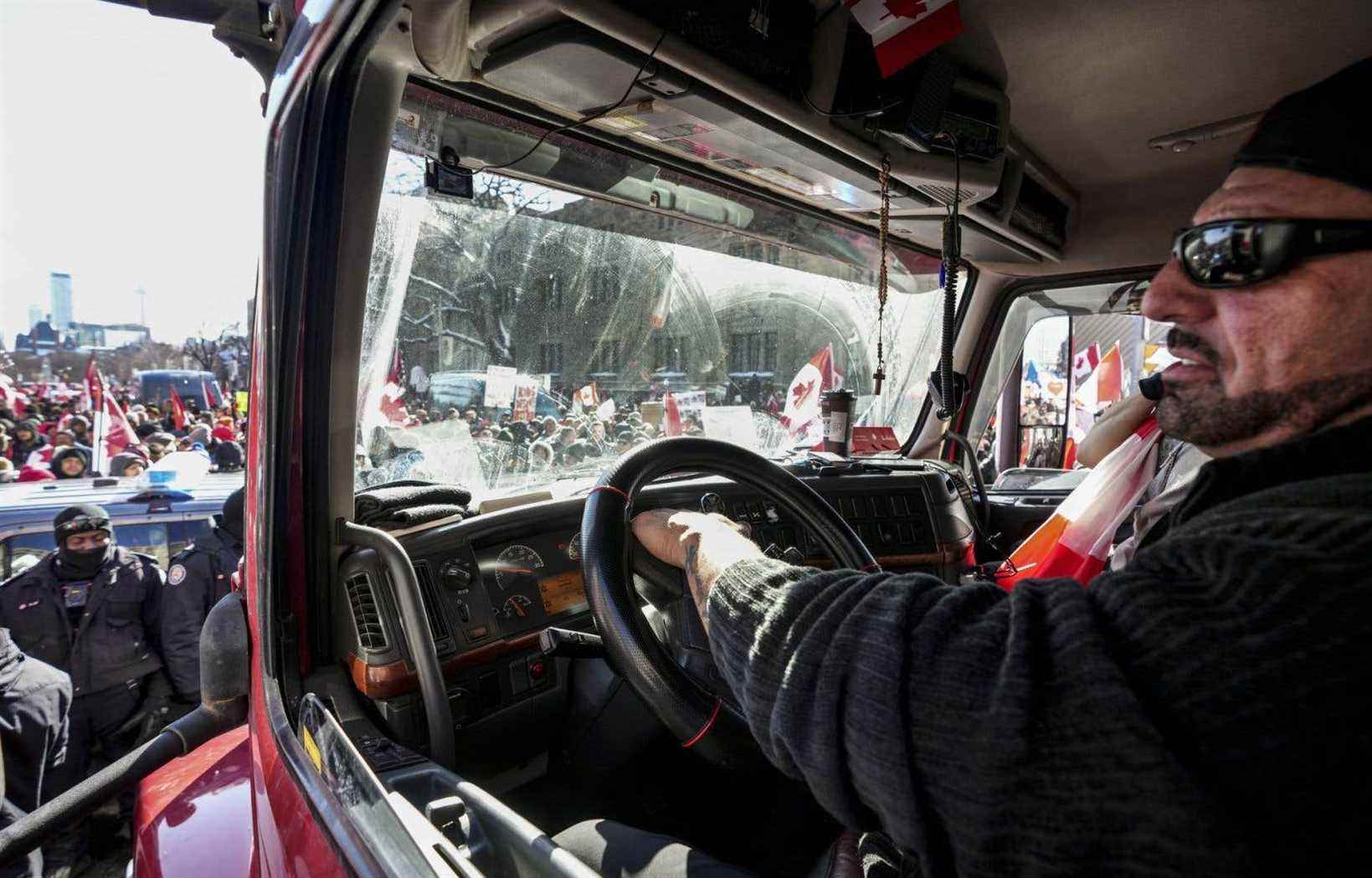The movement of protests against the restrictions linked to the COVID-19 pandemic continues to spread across the country.
In Ottawa, opponents show no signs of slowing down after a week of disruptions downtown and near Parliament Hill.
But they could face a first legal challenge at their expense. An Ottawa lawyer has appeared in the Ontario Superior Court of Justice to argue a class action lawsuit on behalf of thousands of city residents seeking millions of dollars in damages and an injunction ‘resting the continuation of the nuisance “. Judge Hugh McLean said he won’t make a decision until Monday.
Ottawa and several other cities across Canada are working to keep protests peaceful.
Ottawa Police Chief Peter Sloly said all of his officers were on duty to deal with the protest.
According to his estimates, there were around 1,000 vehicles and 5,000 protesters in the heart of the city. He also reported the presence of about 300 counter-demonstrators.
He described Ottawa as “a city under siege”, a situation for which the police were never prepared.
“It’s a seat,” he said. This is something new in our democracies. I have never seen anything like it. We do not have a law on the police which could allow us to act according to the circumstances. »
But usually, in a siege, the “invaders” stand outside the perimeter of a city and block off supplies.
Tensions remain high as many residents expressed frustration, calling the protest an occupation.
By mid-afternoon, thousands of demonstrators sought warmth by small fires lit in front of the West Block, which houses the House of Commons. They grilled hot dogs and distributed food under tarps. Two men rode through the streets of the city on horseback, one carrying a flag supporting former United States President Donald Trump.
Impatient residents
At dusk, chaos set in south of Parliament Hill.
The surrounding streets were jammed with vehicles, including heavy trucks, as far as the eye could see. The police were absent, except near the hill. An open fire illuminated an intersection. Nearby, a restaurant was filled to capacity with customers who weren’t wearing face coverings.
However, a resistance to the demonstration seems to be organizing in the national capital. A group of counter-protesters gathered near the protesters’ encampment at Confederation Park downtown.
“Everyone expects it to be a fun and safe event. However, there is still this underlying danger for all visible minorities, all people in the LGBTQ community,” Ottawa resident and counter-protest organizer Mackenzie Demers said in an interview Saturday.
“These occupants, they are dangerous. They have trucks. There are rumors that there are weapons,” added Mr. Demers.
Some residents questioned the validity of such an approach.
“I feel like this is a futile and stupid move, and I was discouraged by the deterioration of our political life this morning,” said Ottawa resident Jeremy Owen, who organized an online petition calling on the Ottawa police to evict the protesters.
In Toronto, Vancouver, Regina…
In Toronto, several hundred protesters gathered on the south side of the Legislative Assembly of Ontario, chanting “Liberty” in French over loud reggae beats blasted through loudspeakers. Some carried placards that read: “freedom = no obligation” or “let love, not fear guide you”.
Police in the Queen City say they arrested a 22-year-old man for lighting a smoke bomb. He will face charges of assault with a weapon, mischief and administering a noxious substance.
Nearby, some 200 health care workers and supporters marched from the University of Toronto and to a hospital. They held up signs saying “no fools” or “N95 masks for all”.
Demonstrations also took place in Quebec City, Fredericton, Winnipeg, Regina, Edmonton, Vancouver, Victoria and in the border town of Coutts, Alberta.
Several police forces say they have learned from the demonstrations in Ottawa. They have developed strategies to protect critical infrastructure, such as critical thoroughfares, hospitals while preventing acts of violence.
